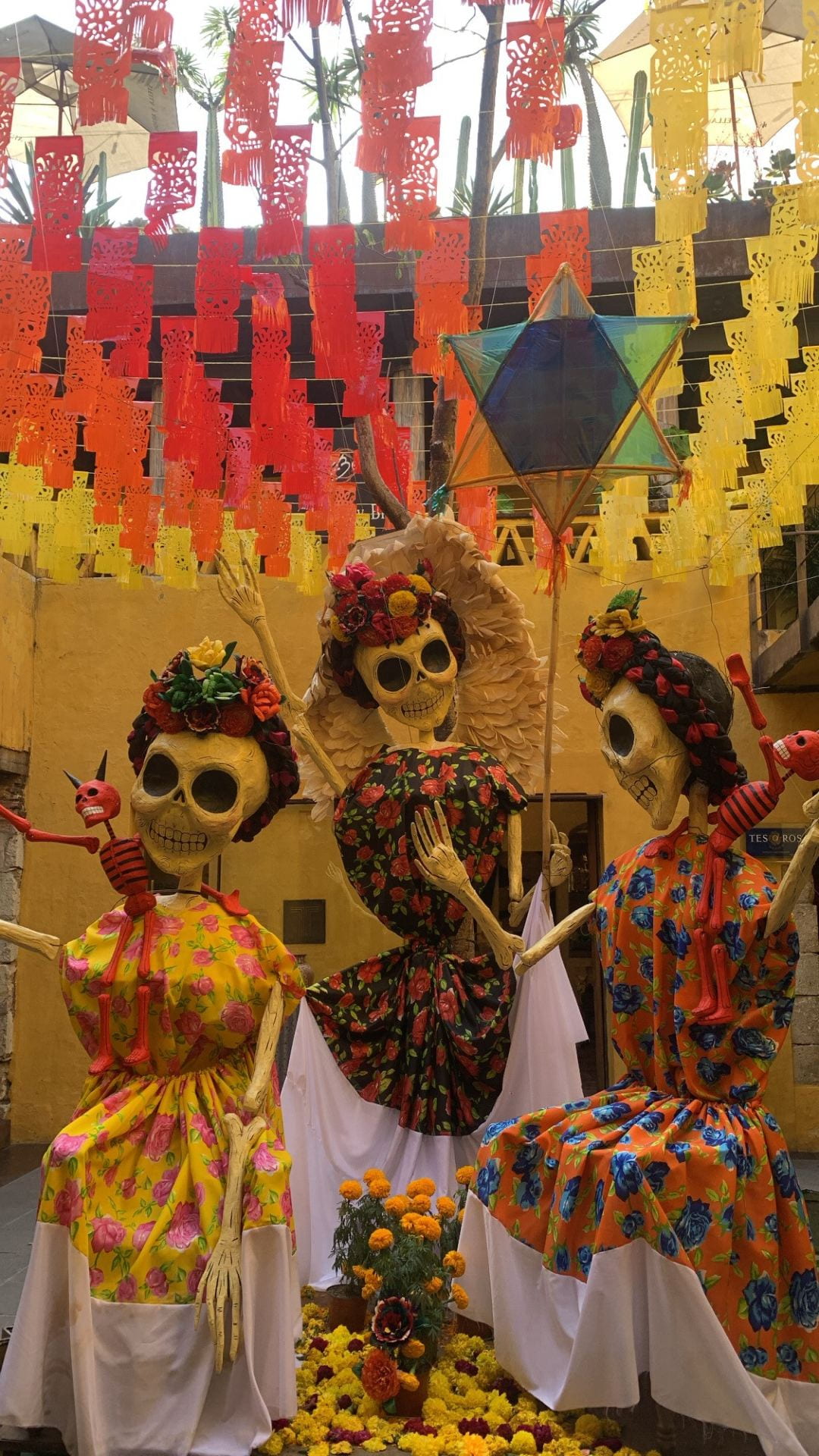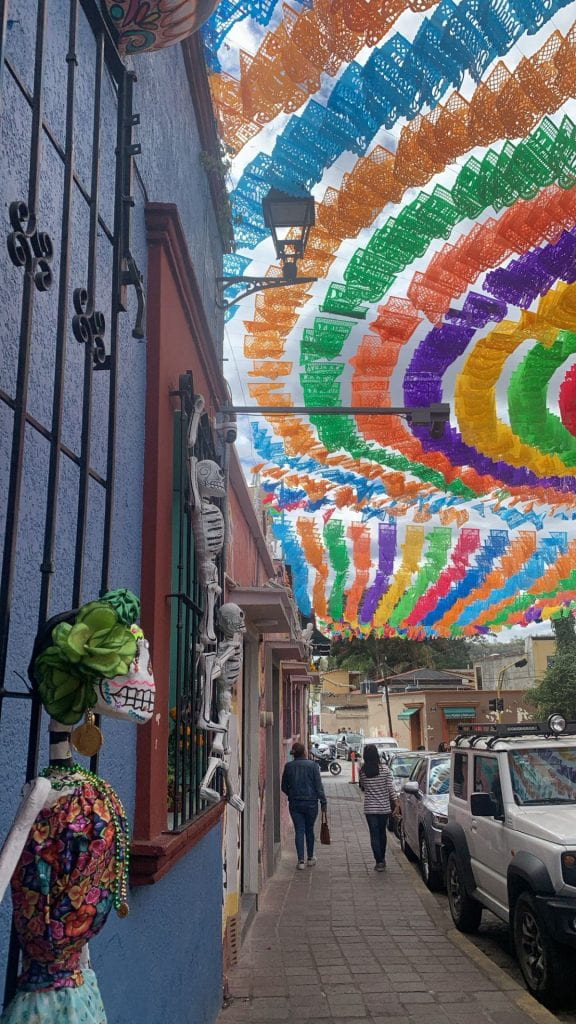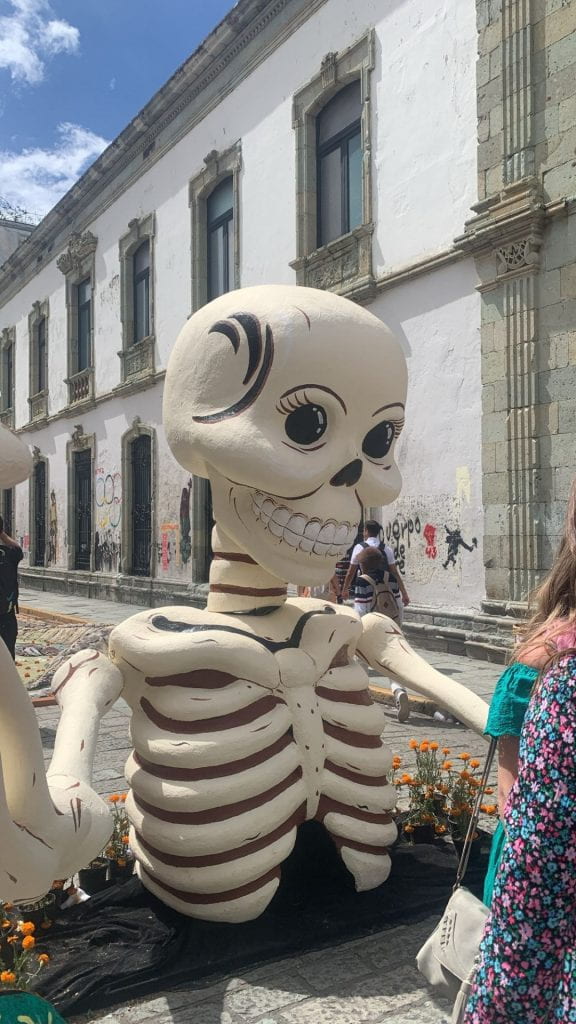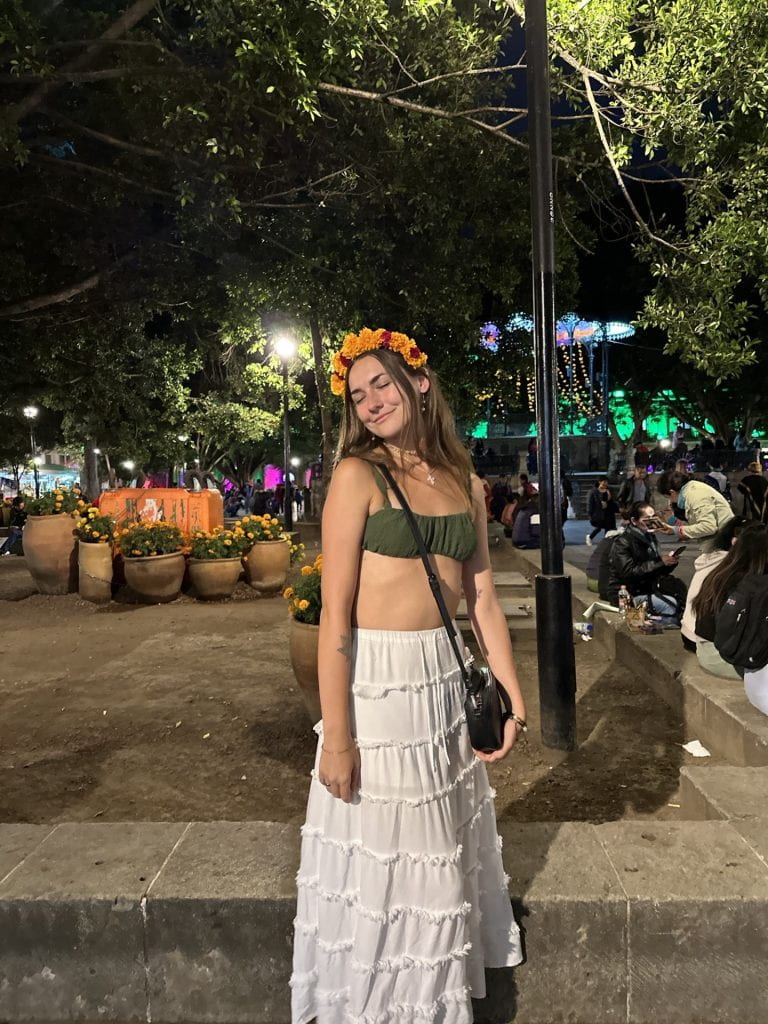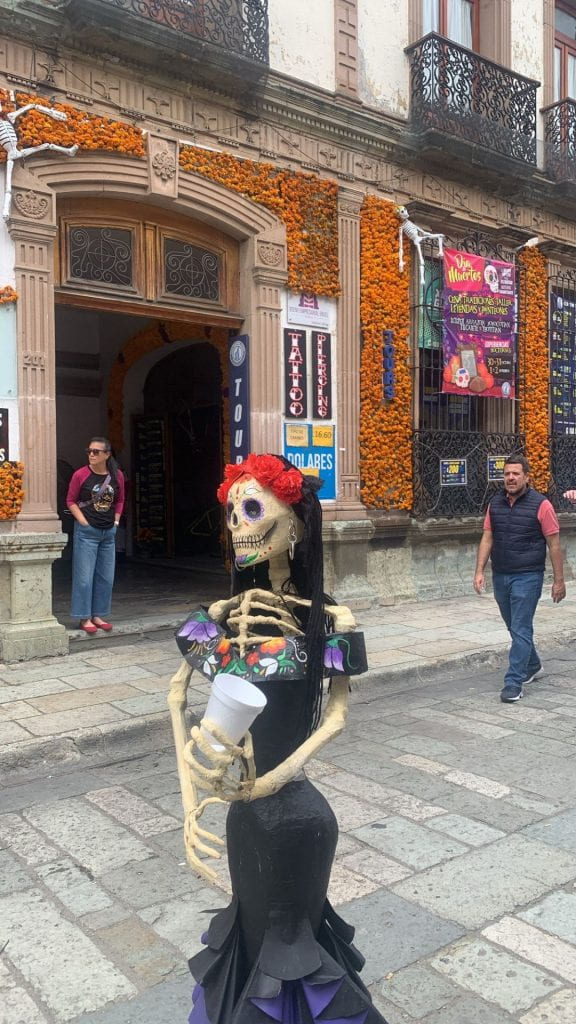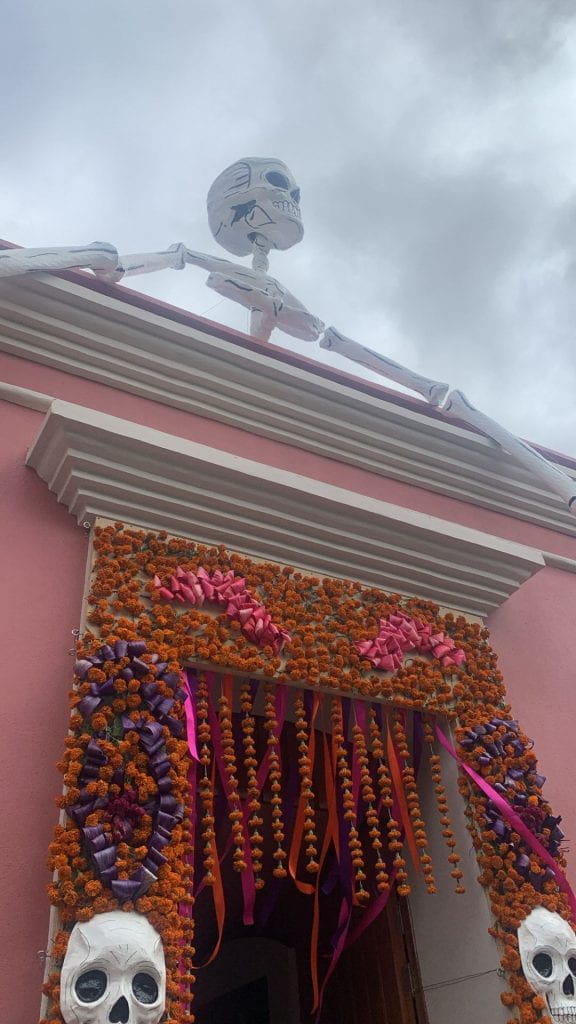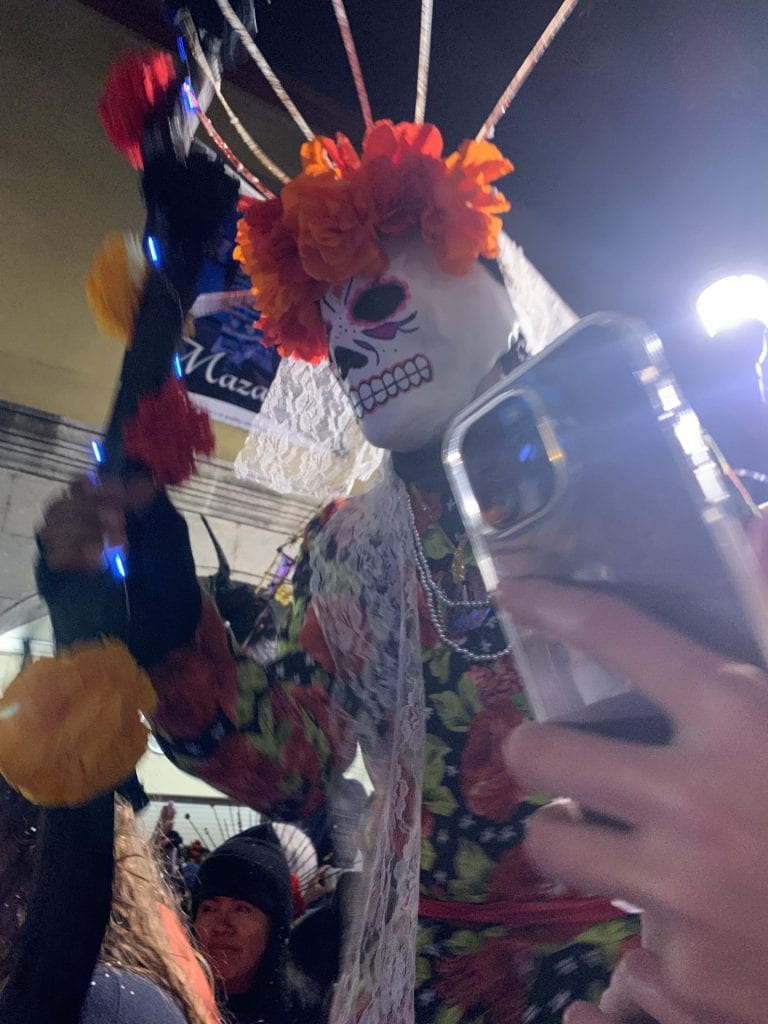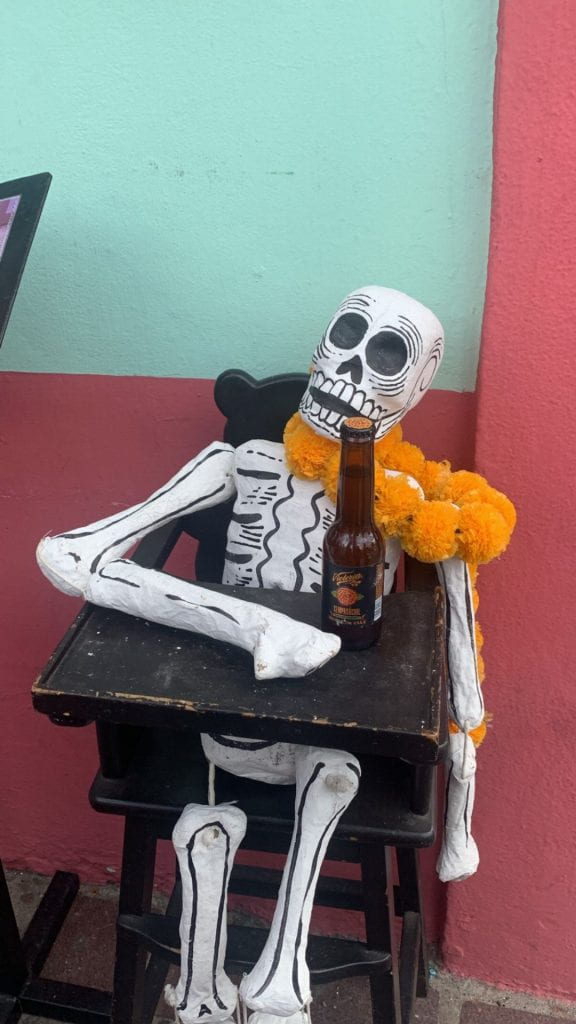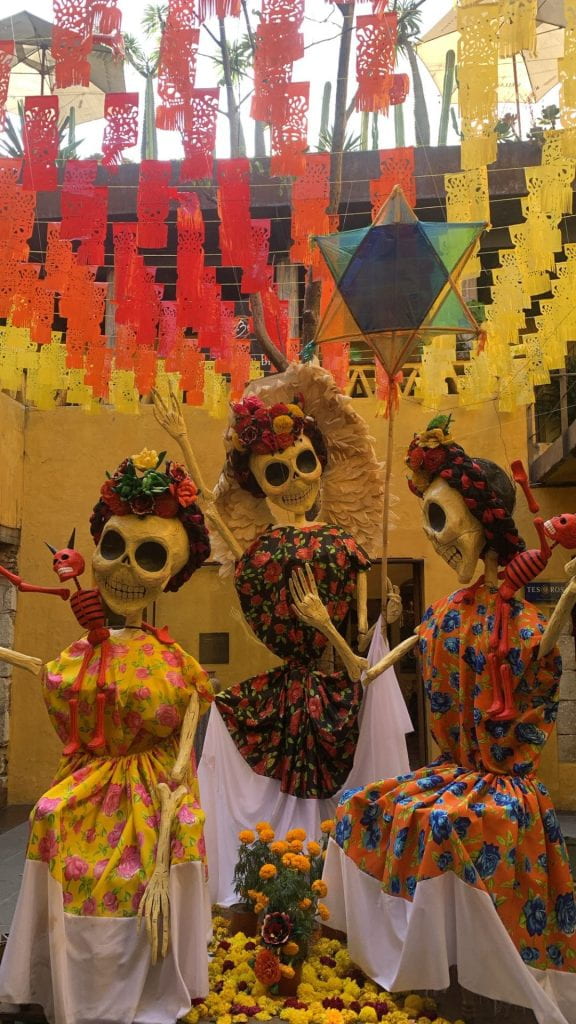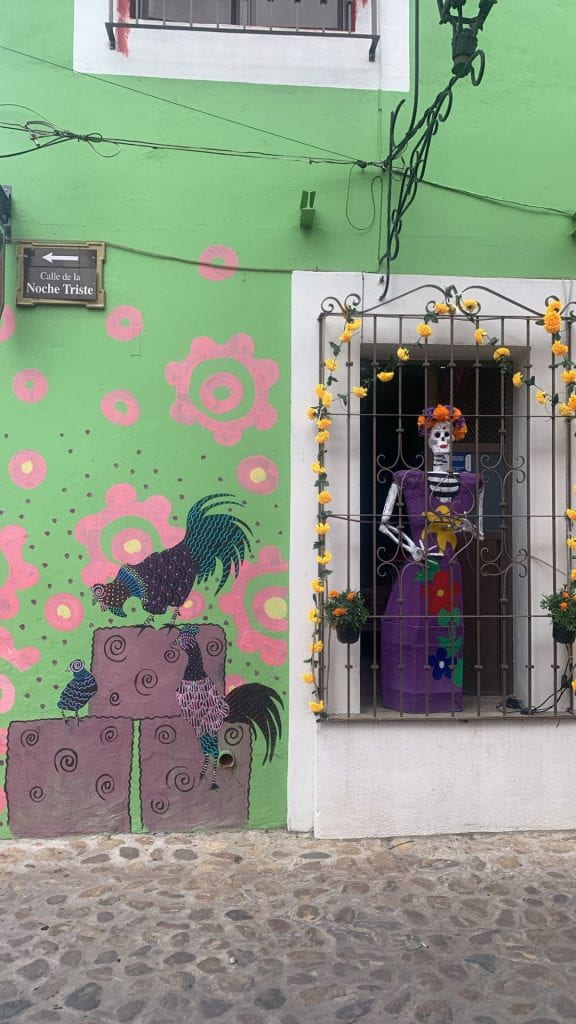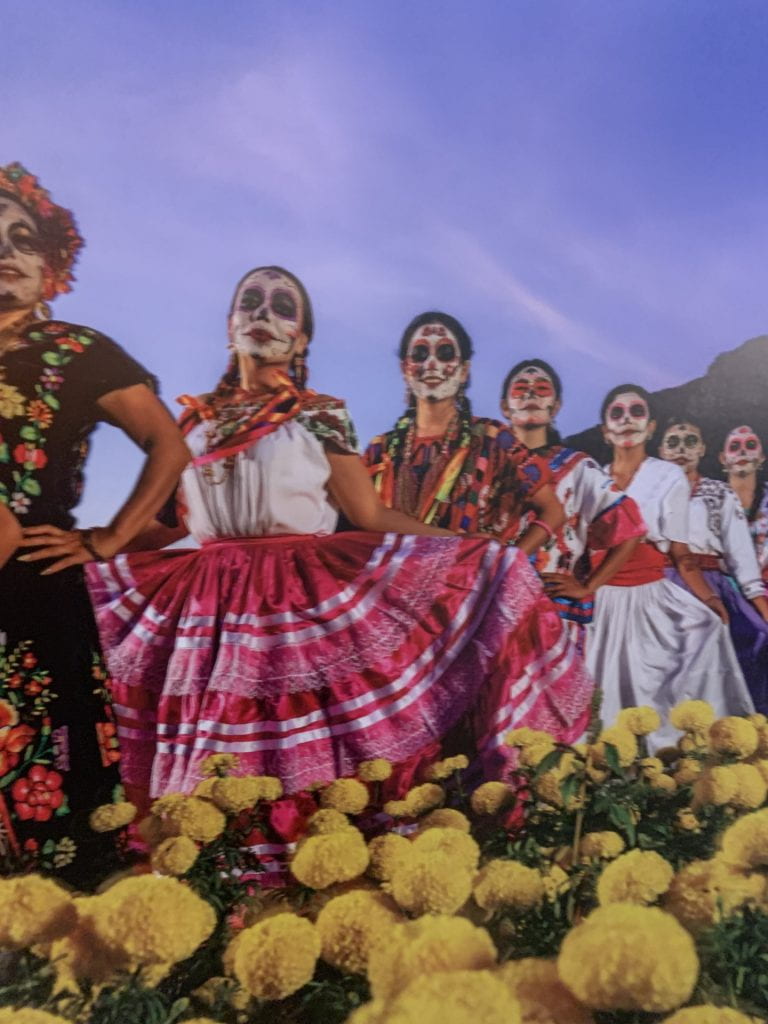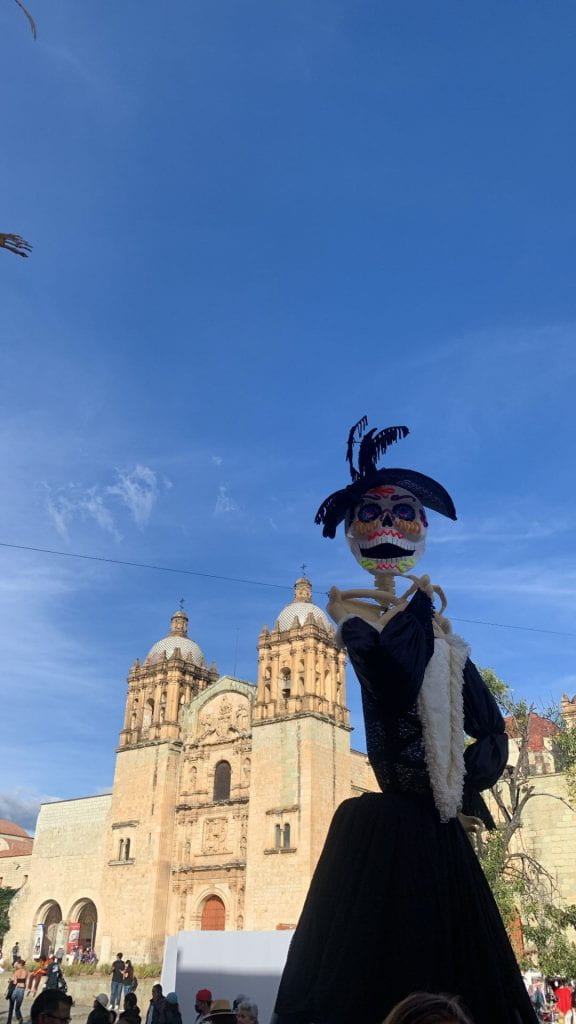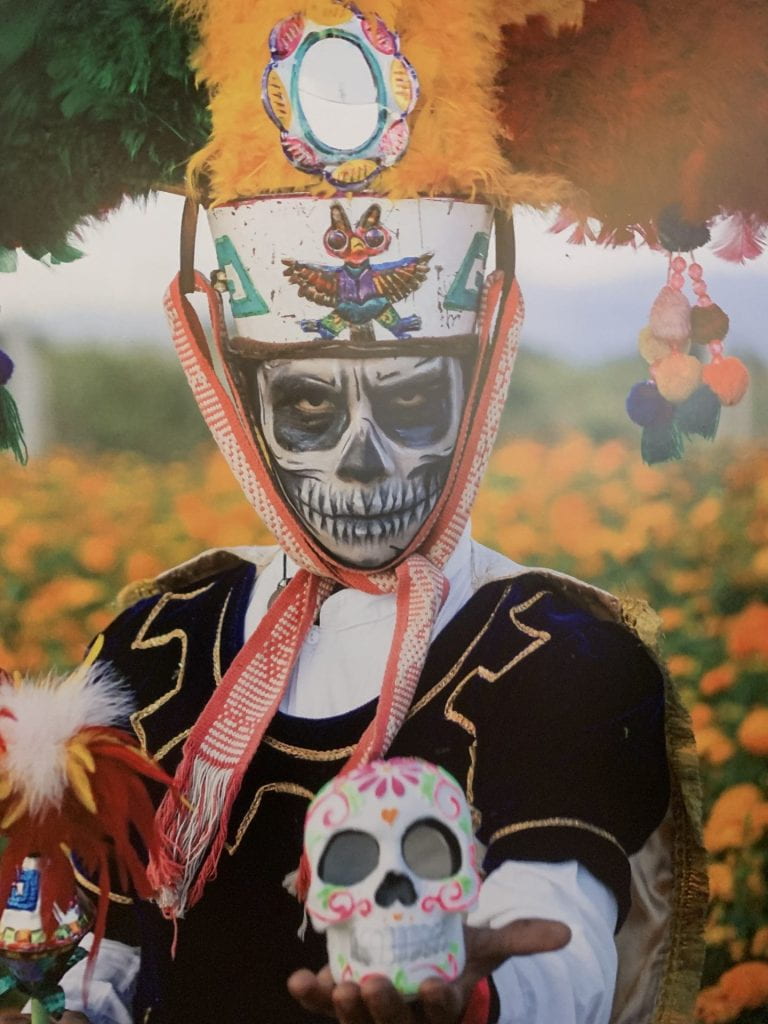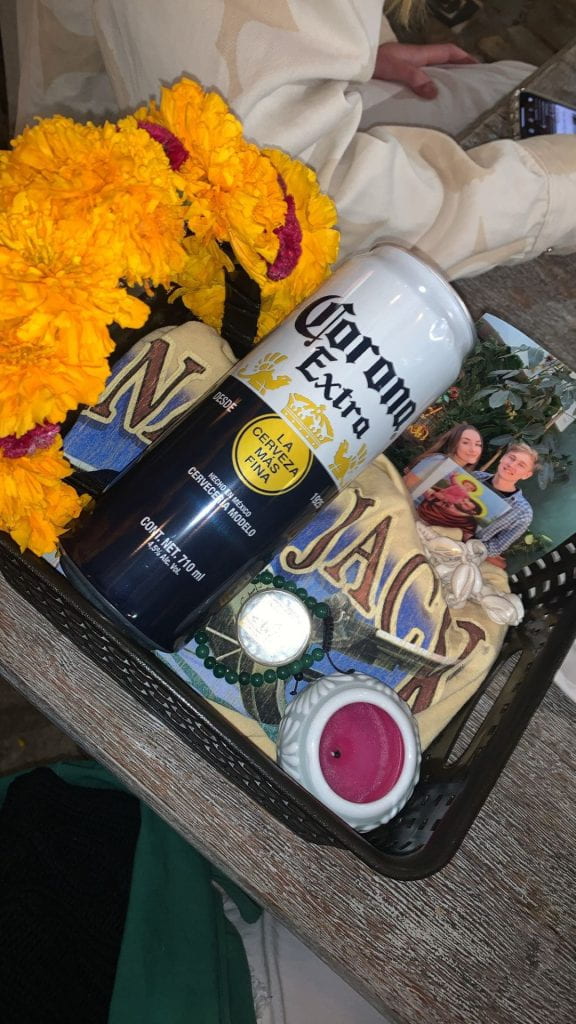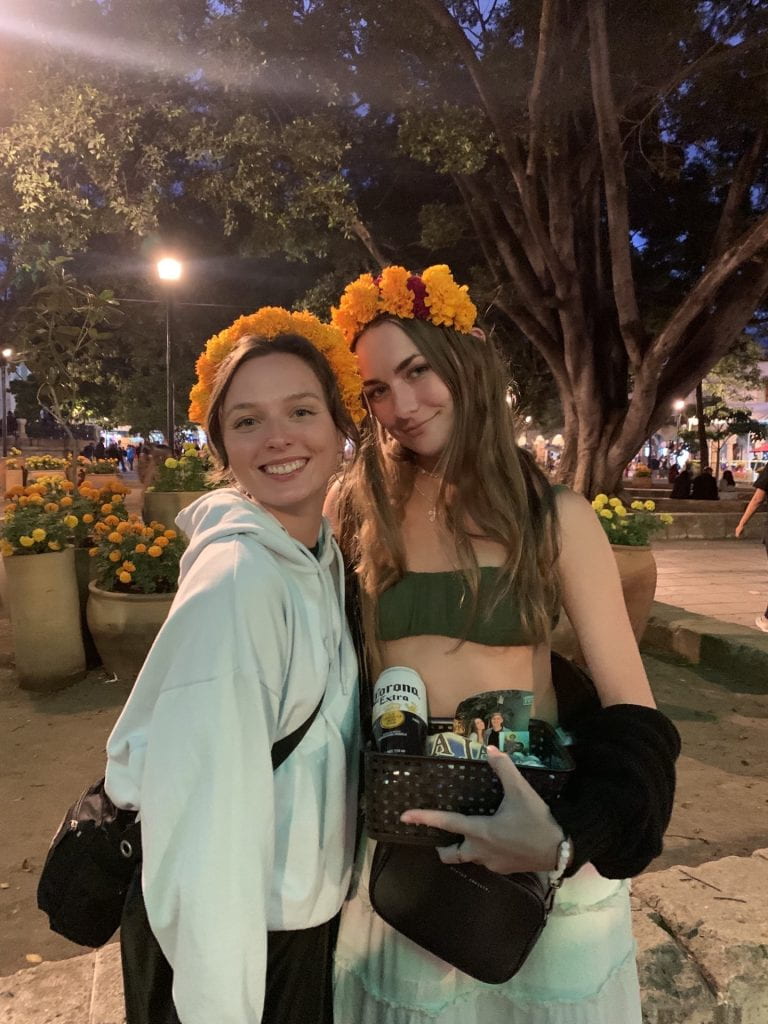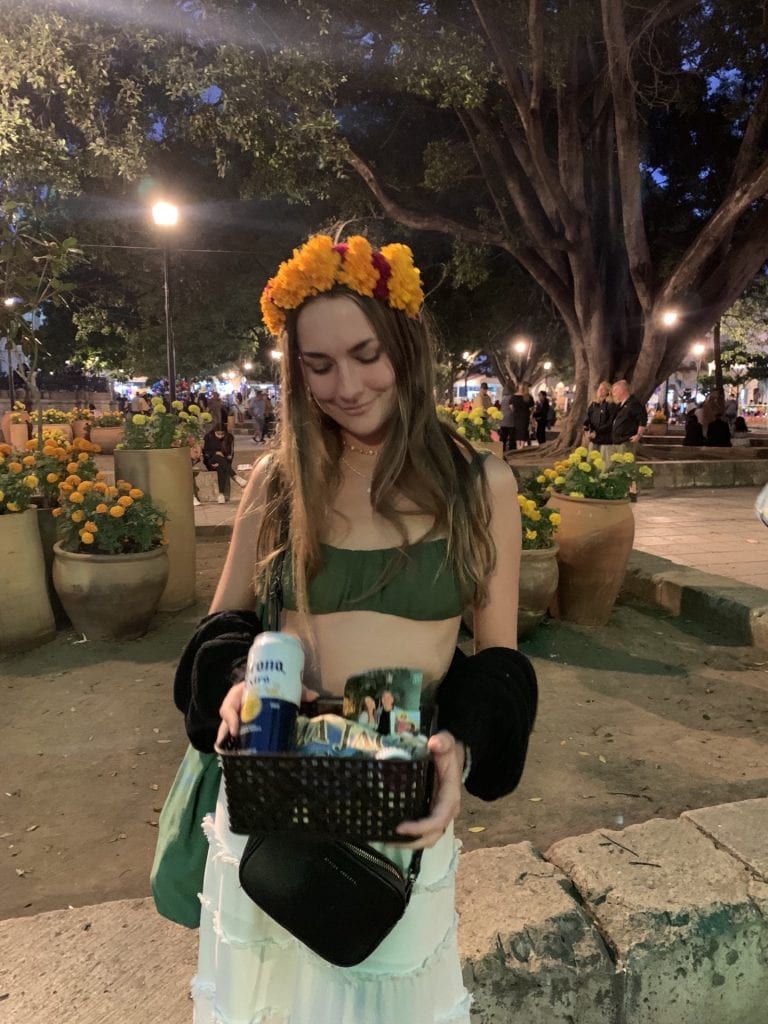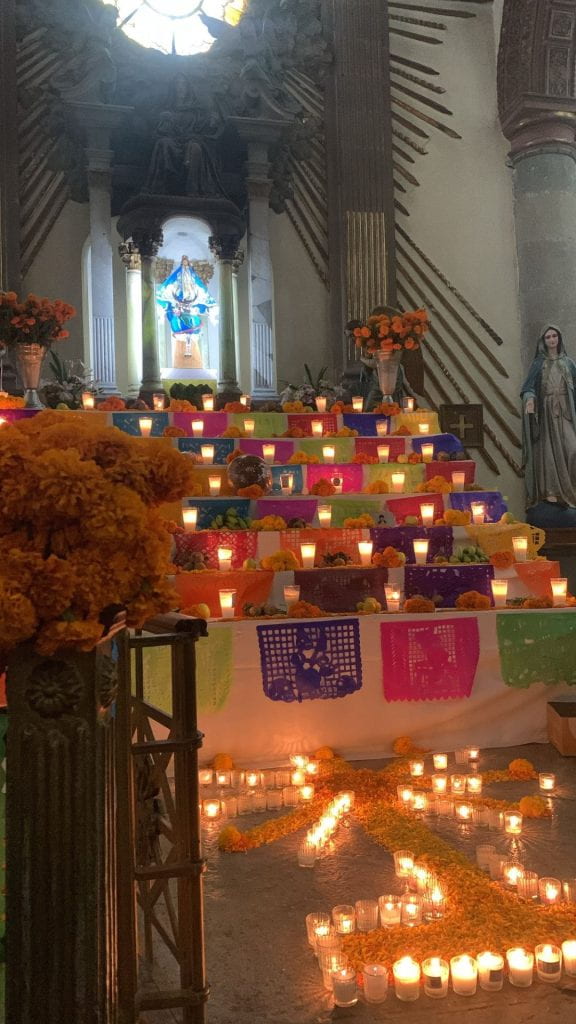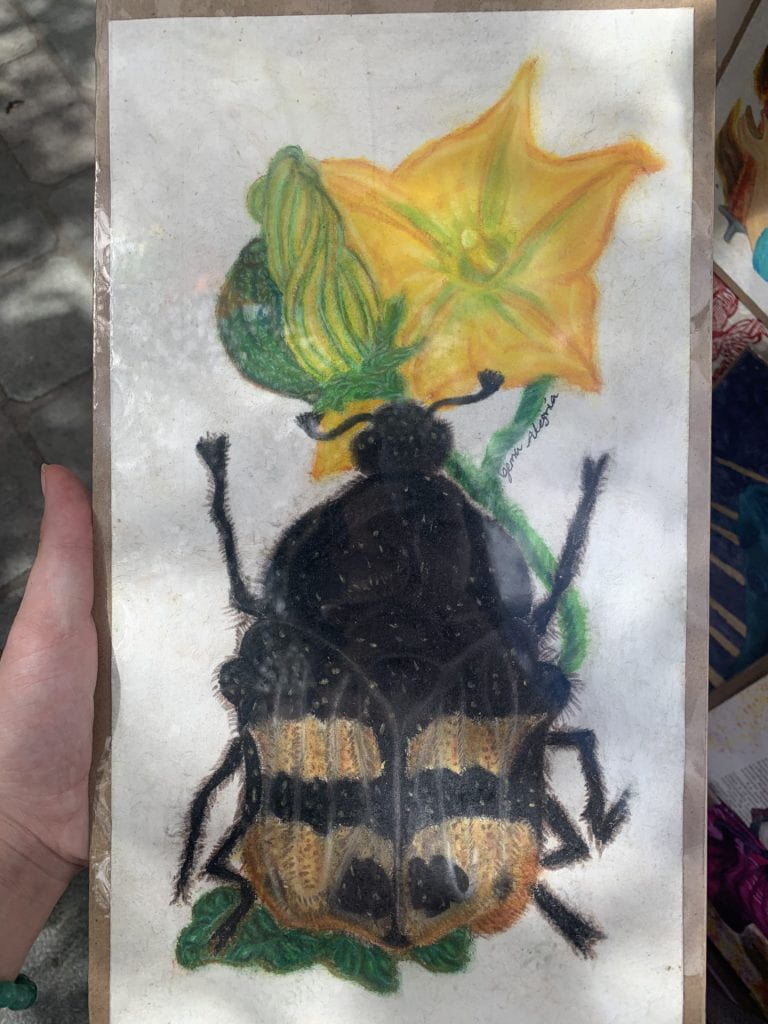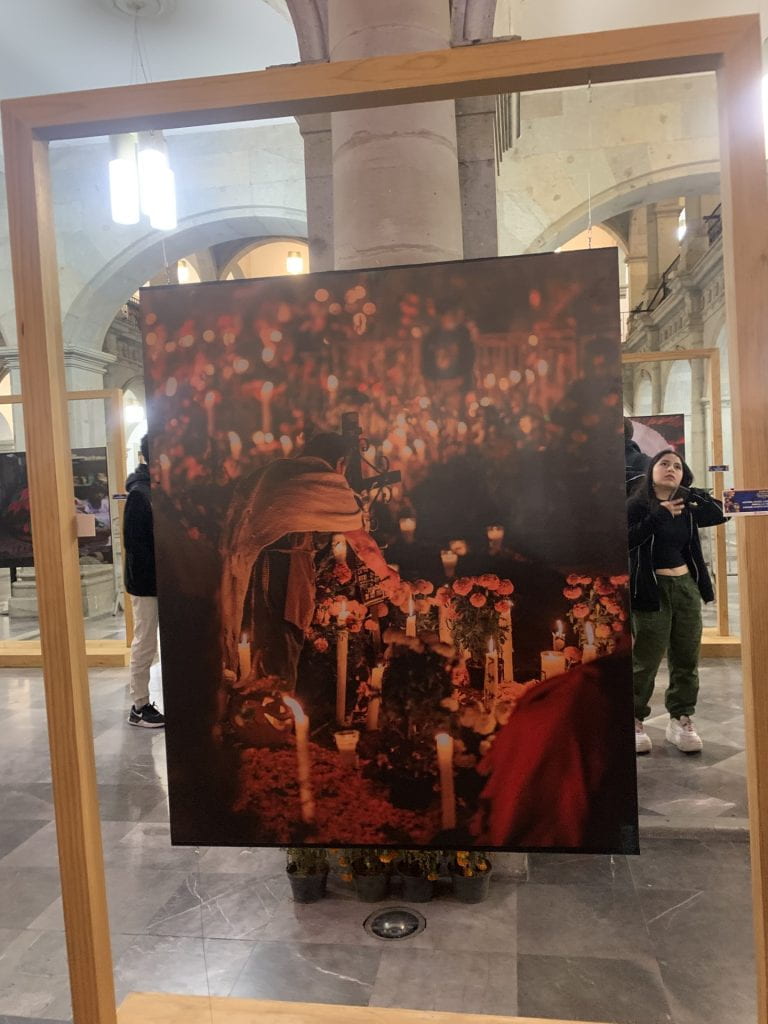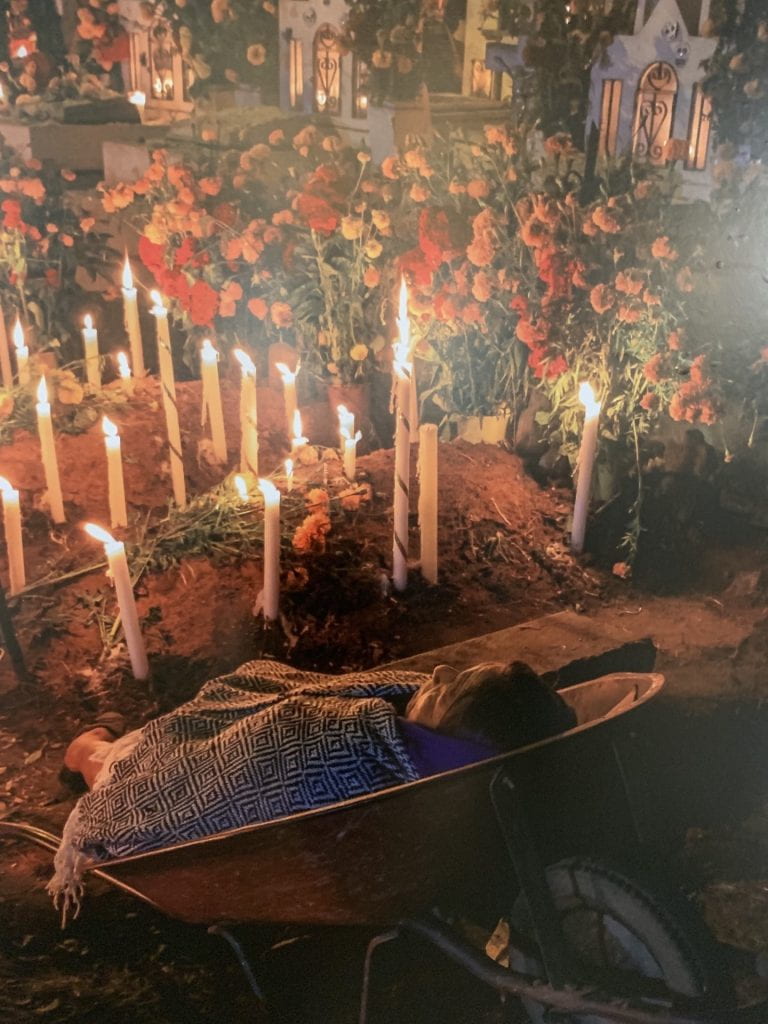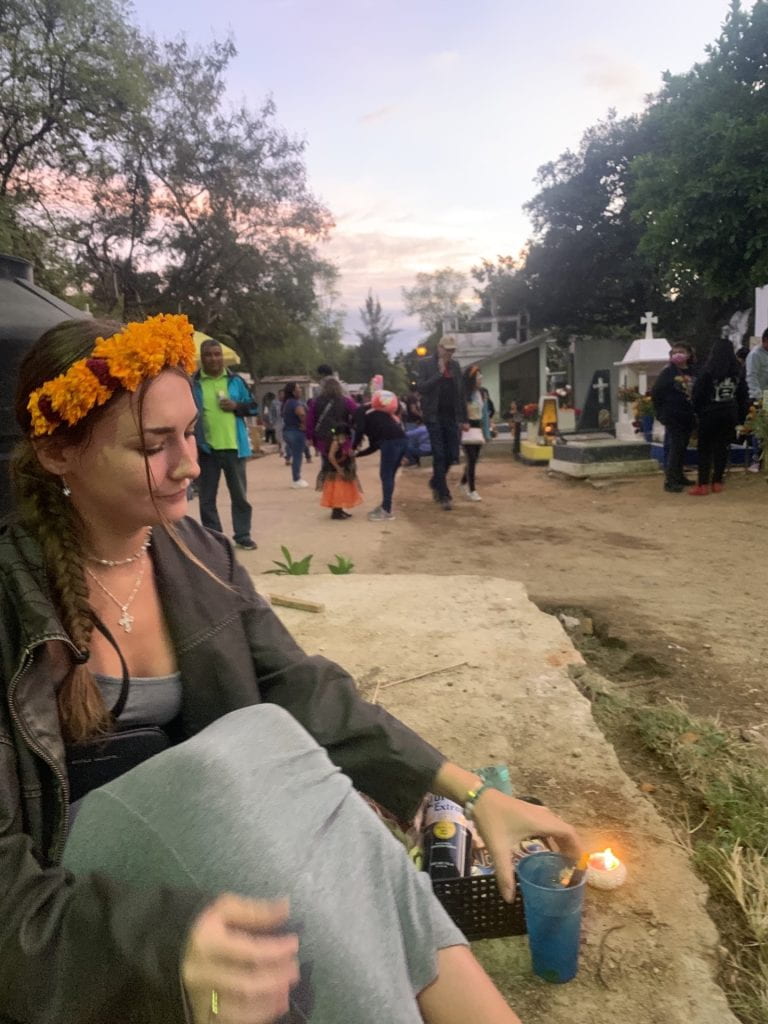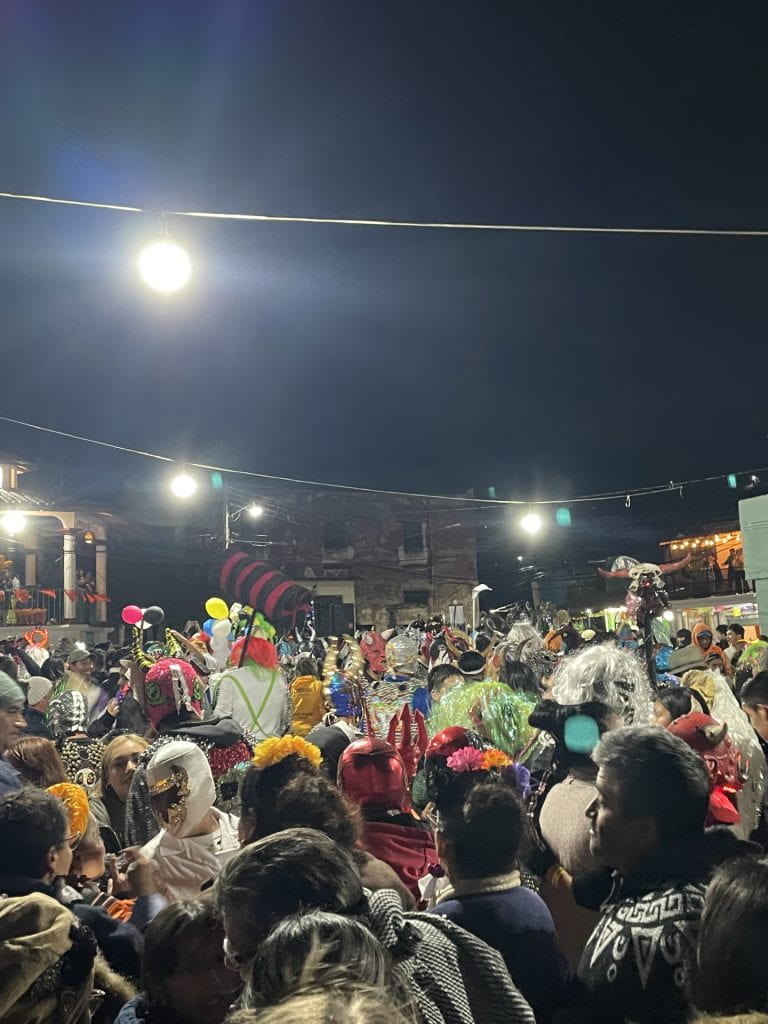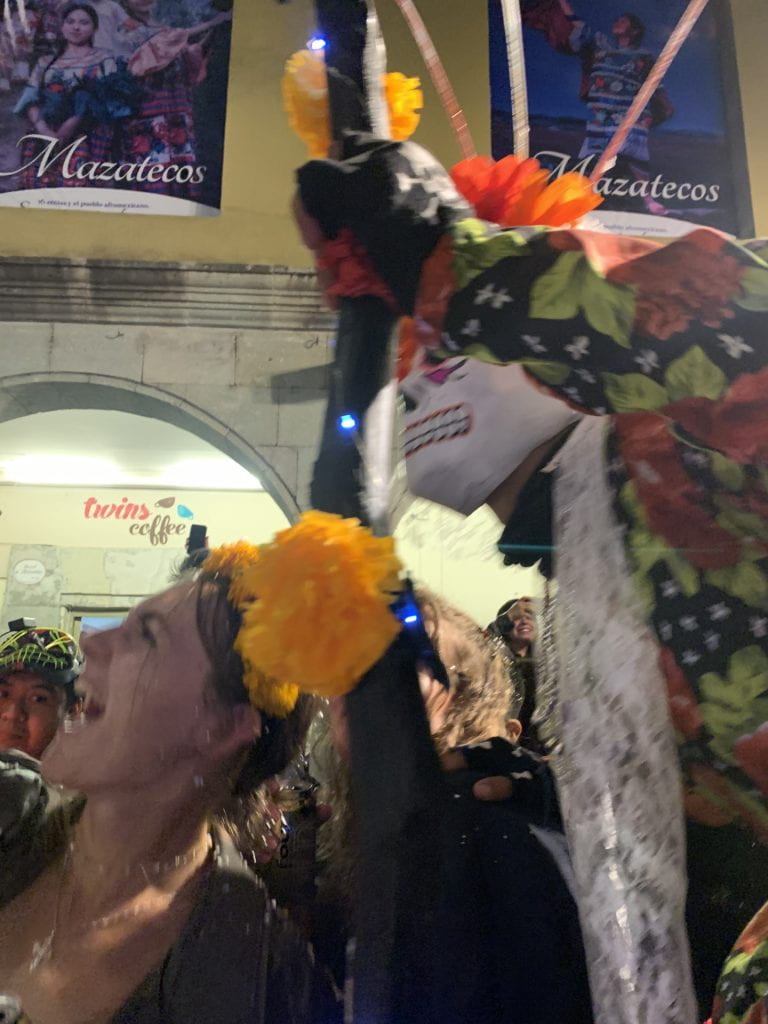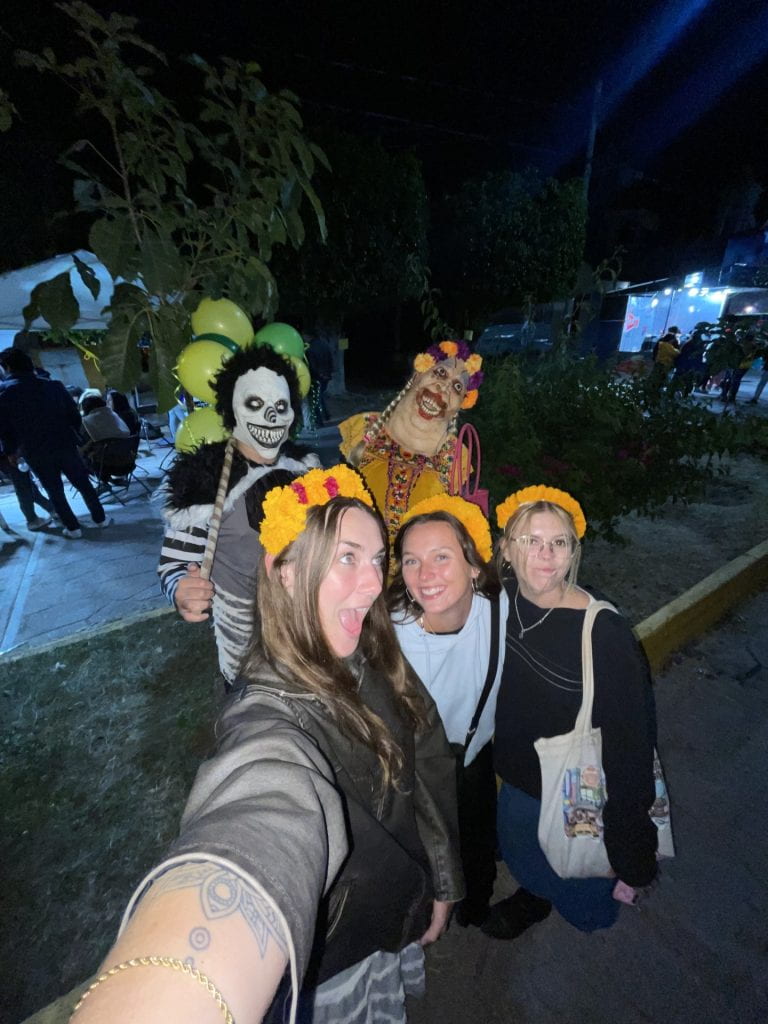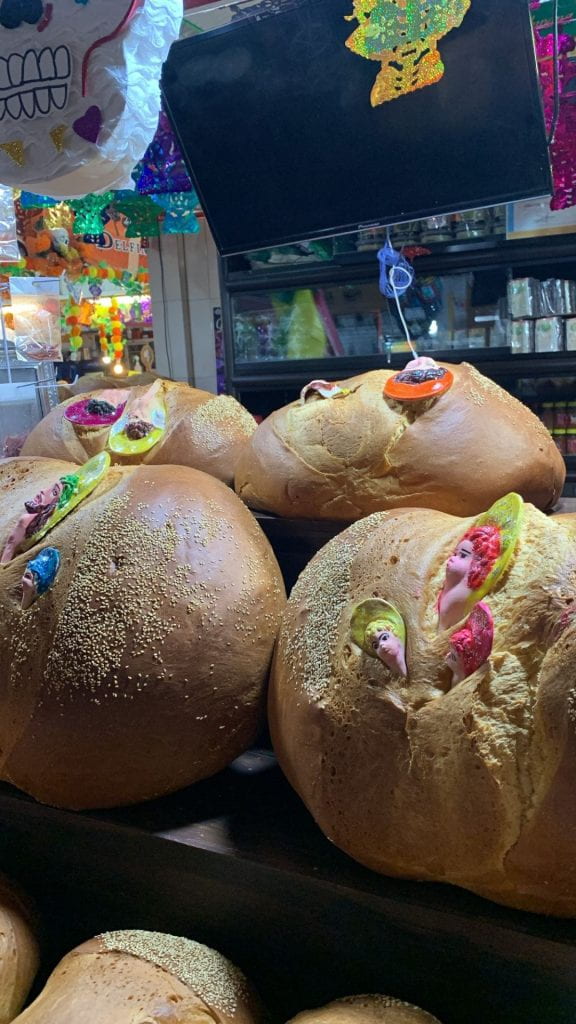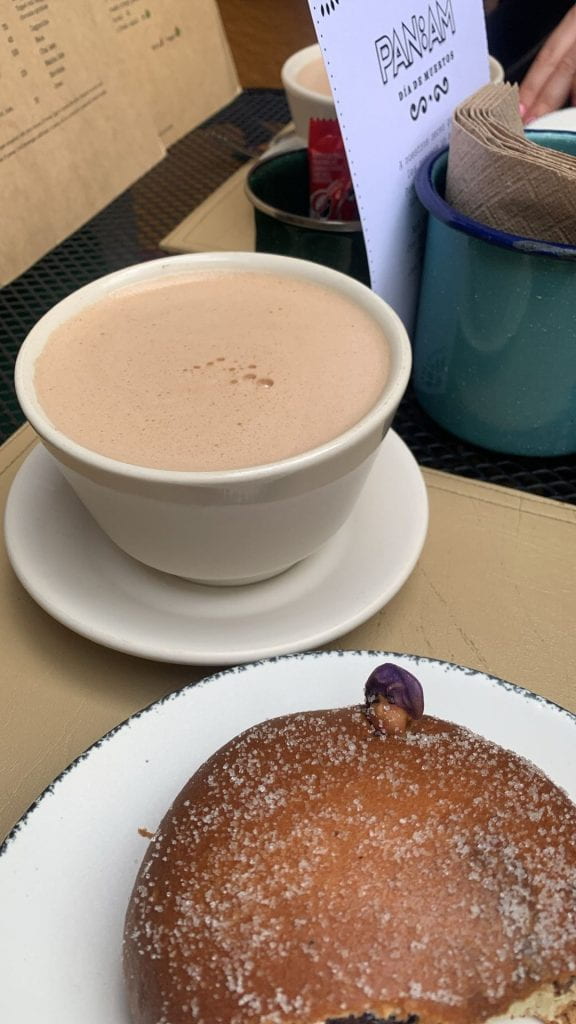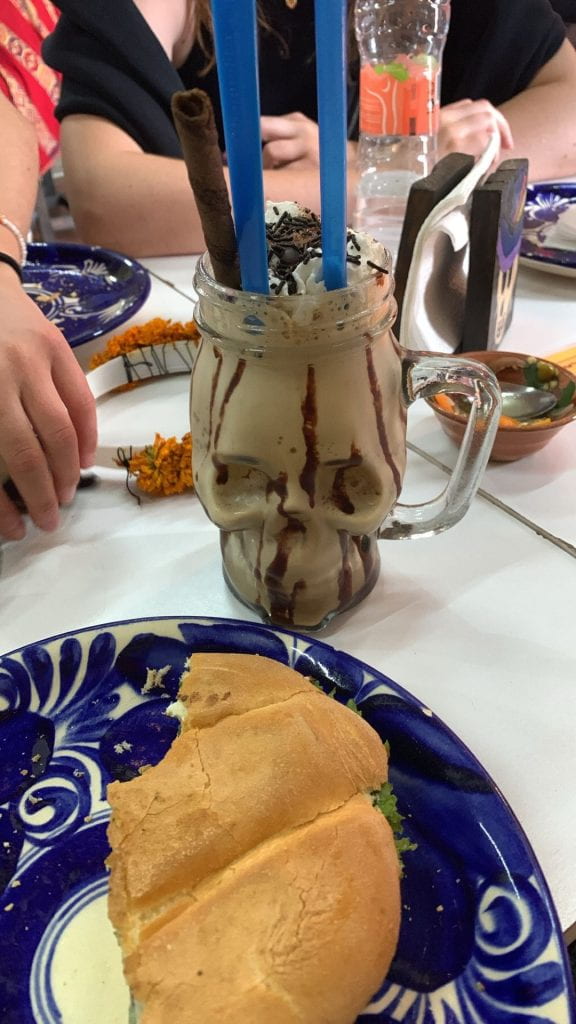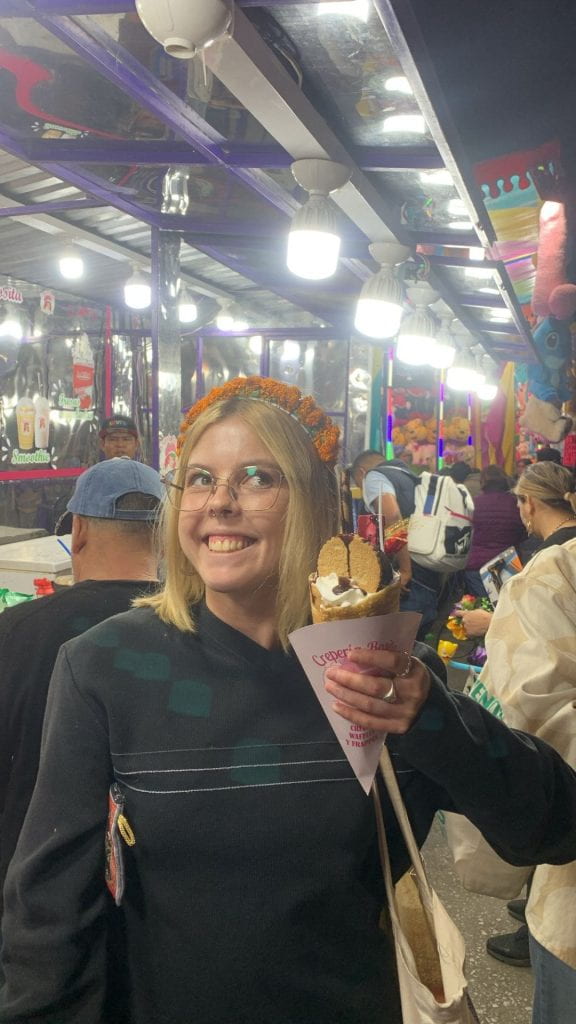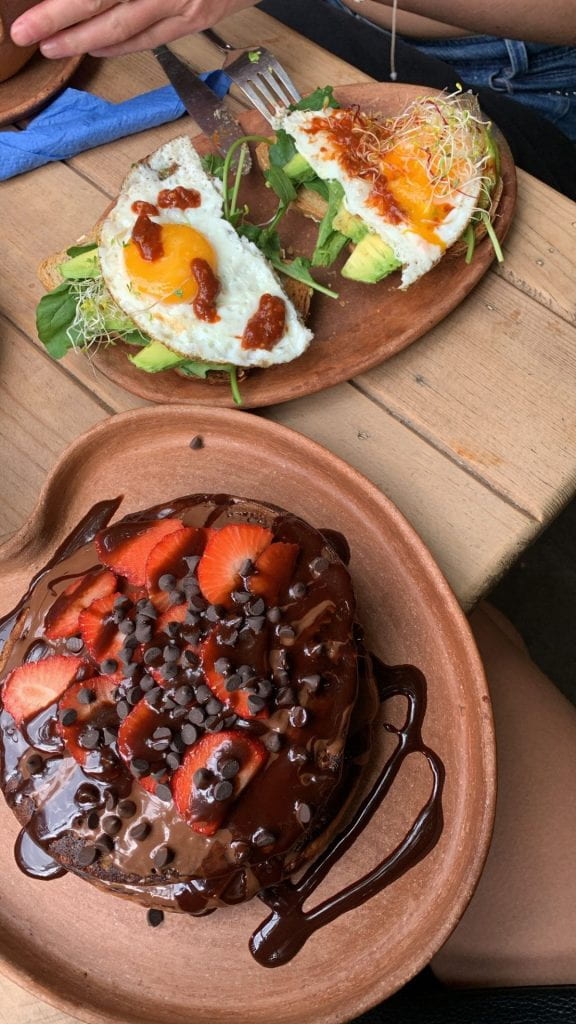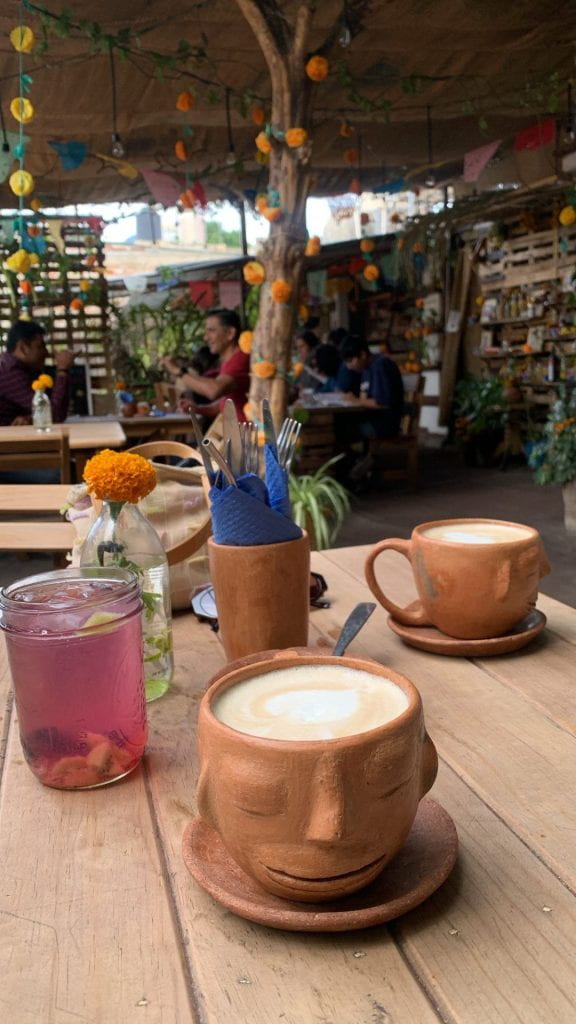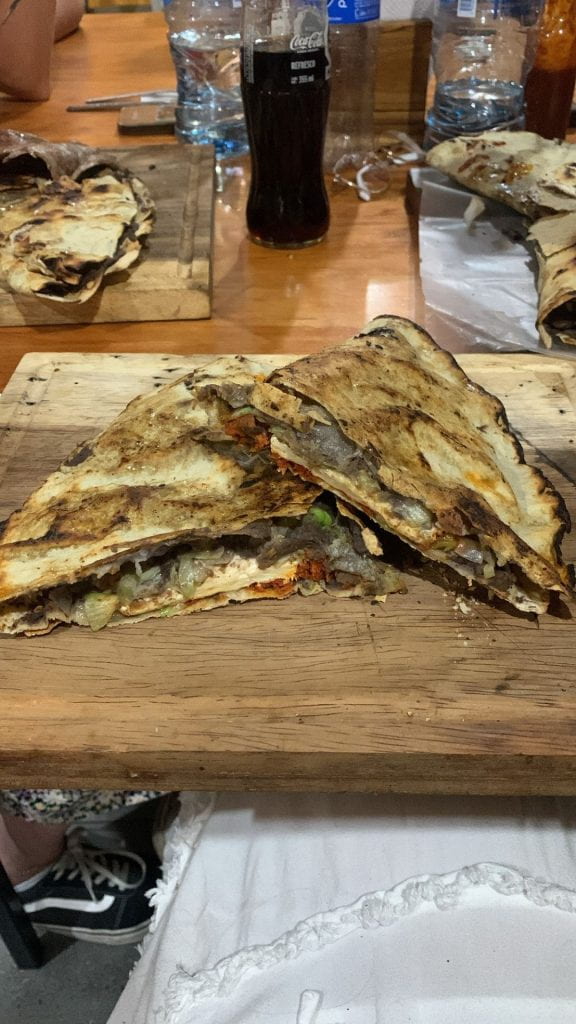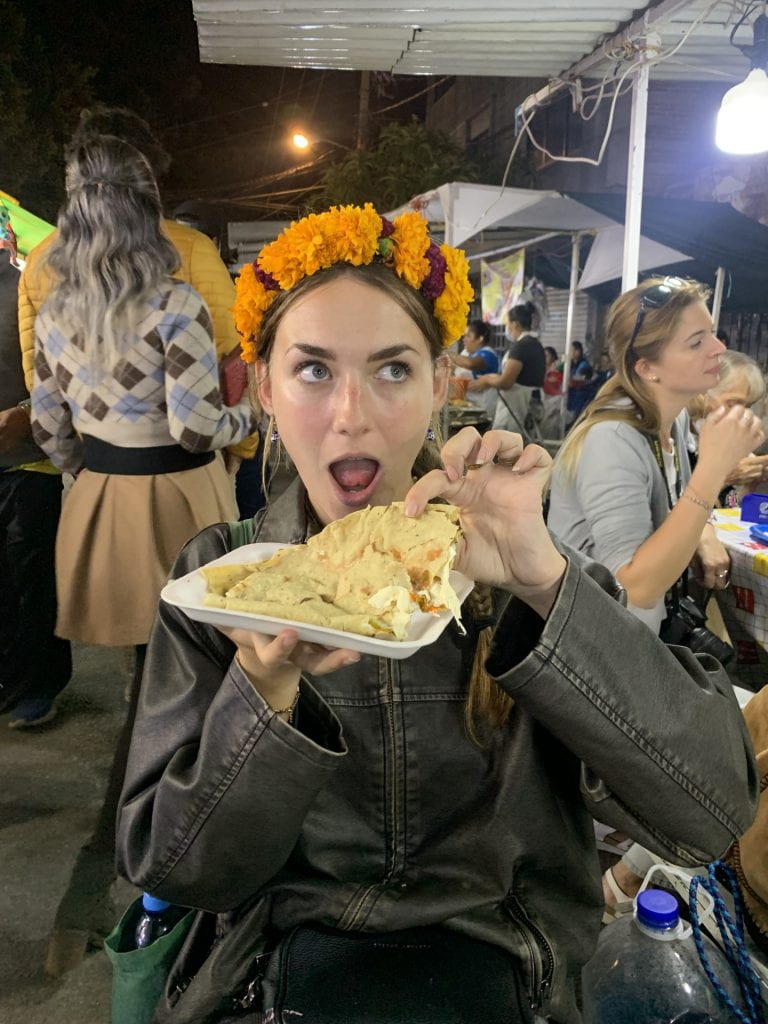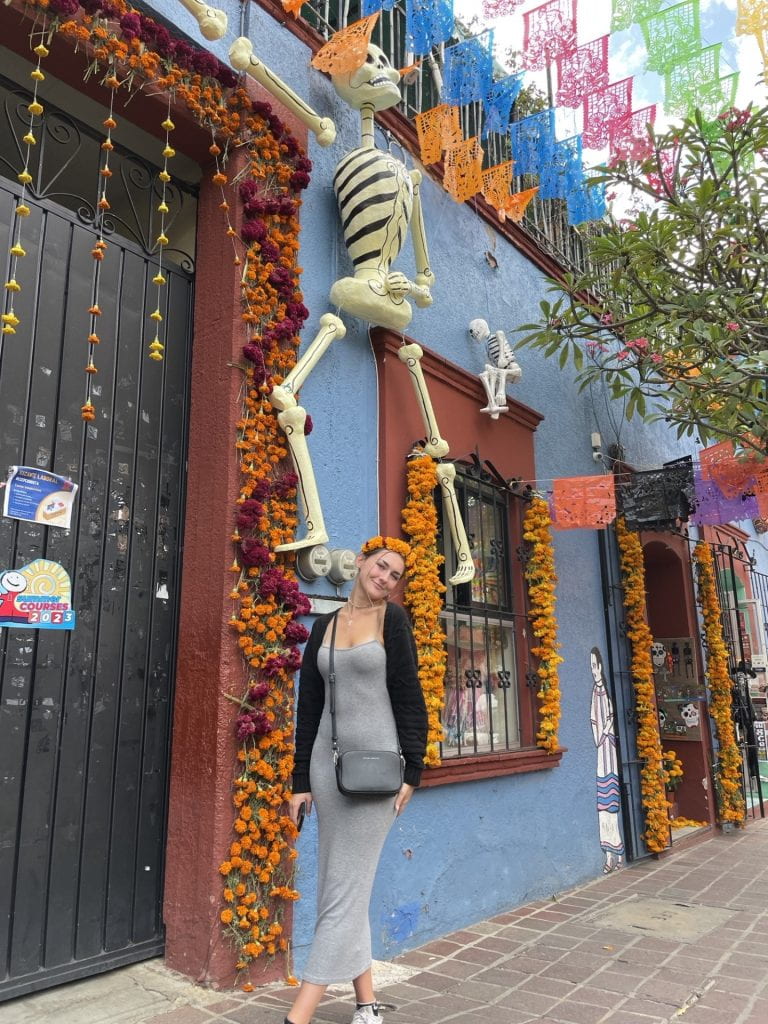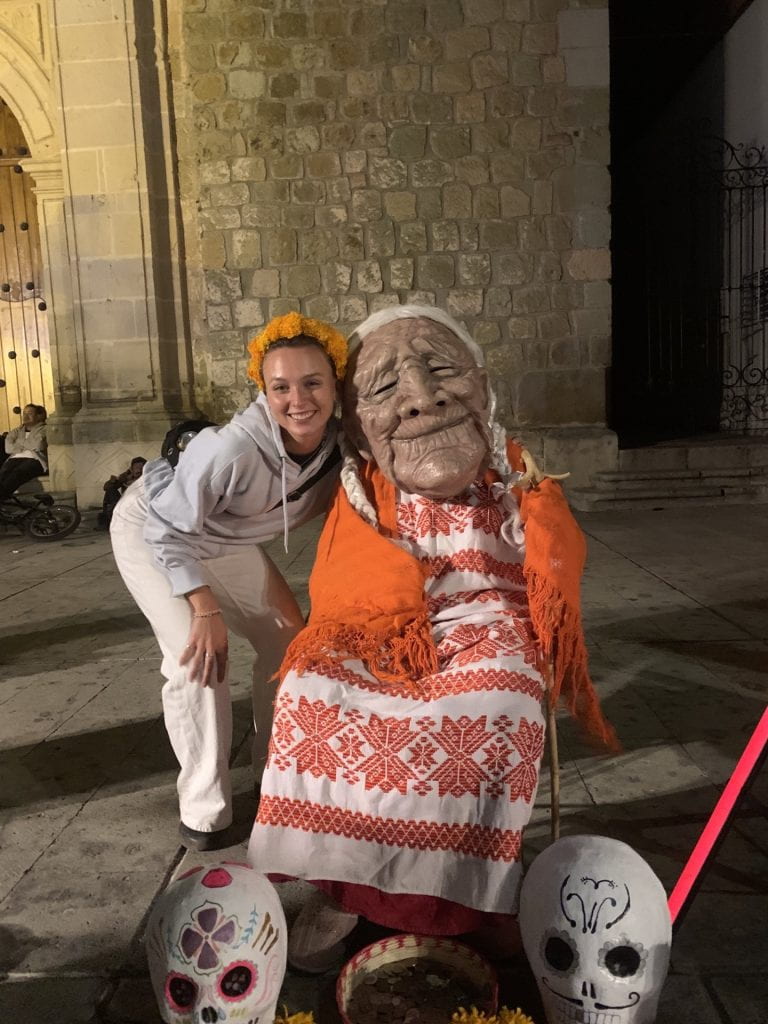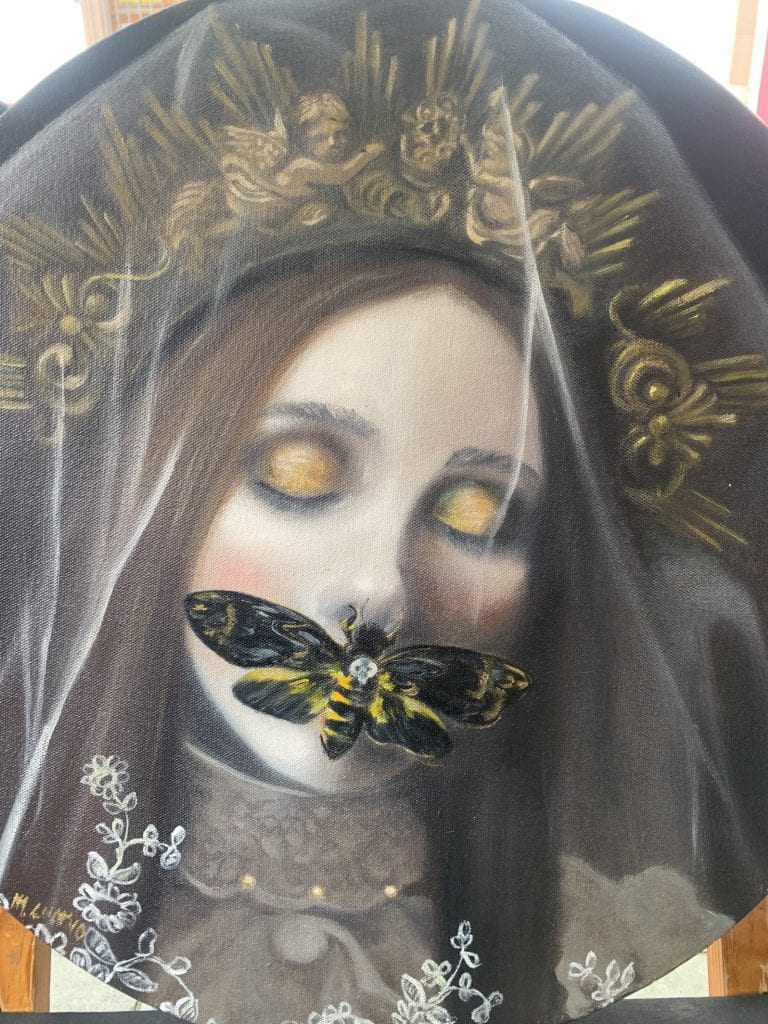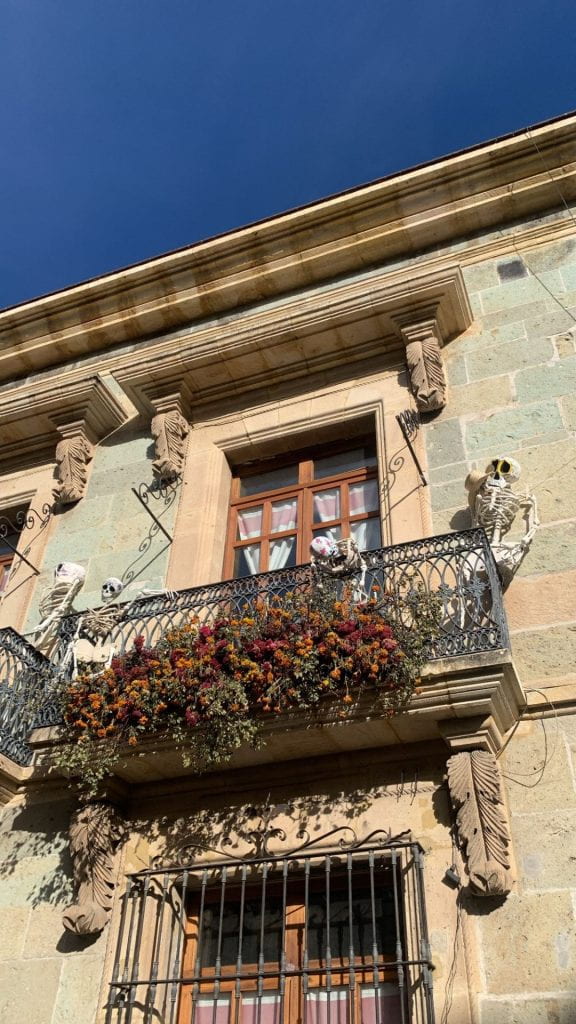Días de los muertos , or Day of the Dead in English , is a well- known celebration in Mexico. The official days are the first and second of November , but festivities can begin weeks beforehand. The components of this celebration, such as the skull , is a symbol of Mexico. You are likely to find many tourist antiques or photos of Mexican culture involving skulls. Day of the Dead is truly integrated in Mexican history and ideologies.
Although it might be a symbol of Mexican culture from a global perspective, it tends to be celebrated in the Southern states of Mexico , ranging from the main city to little towns surrounding the capital. An iconic city to visit for Dias de los muertos is Oaxaca, located Southwest of Mexico. Many exchange students took the 9 hour bus ride from Mexico City to visit this little town, including my group of friends. The Day of the Dead was something on my bucket list before I got accepted for this exchange. For a previous Development Psychology class I took at the University of Auckland, I did a presentation about the cognitive and emotional impacts of this celebration on Mexican children compared to children from Westernized countries. I felt lucky to take part in this celebration, and I can definitely say it lived up to its expectations.
The Meaning
As said in the name, Day of the Dead is about commemorating loved ones that have passed and welcoming them back into the world of the living. It is a giant celebration where families come together, with their ancestors being the guest of honor. Besides the knowledge I learnt from my previous project, I learnt so much about the holiday amongst the festivities in Oaxaca. Here was some of my favorite components of the gorgeous celebration:
Marigolds are described as the flower of the dead, so they are everywhere during this time. The vibrant color and strong scent is believed to help lead the dead back to the world of the living. The majority of us brought flower crowns with Marigolds in them, which were handmade by the locals. Many families make a petal path in their homes to lead their deceased loved ones to the ‘ofrendas’.
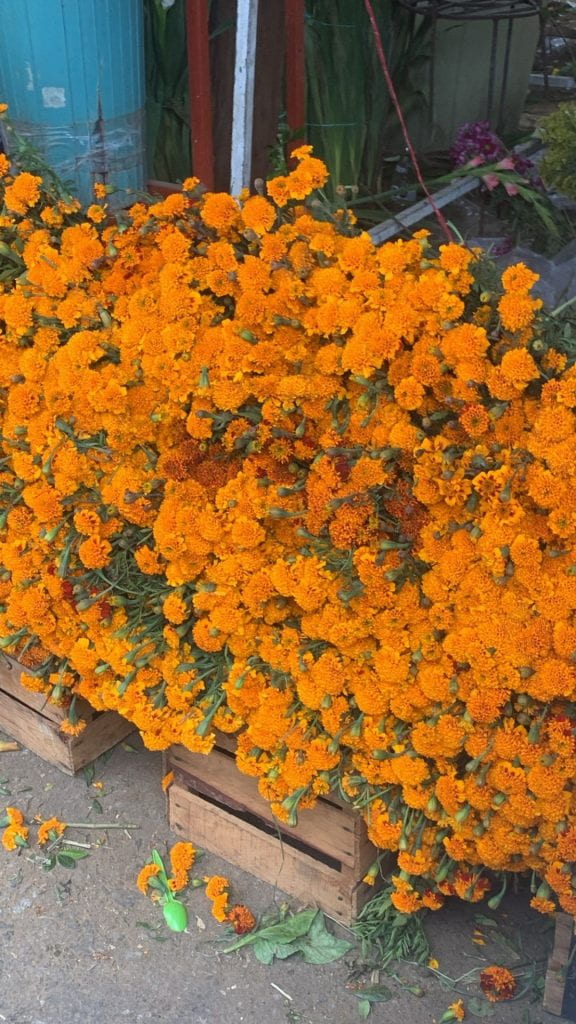
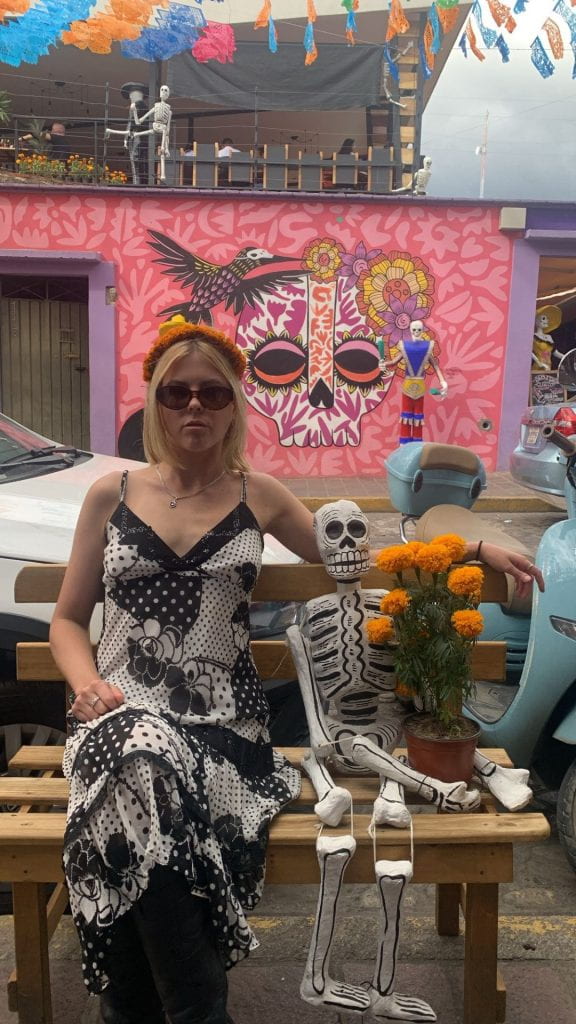
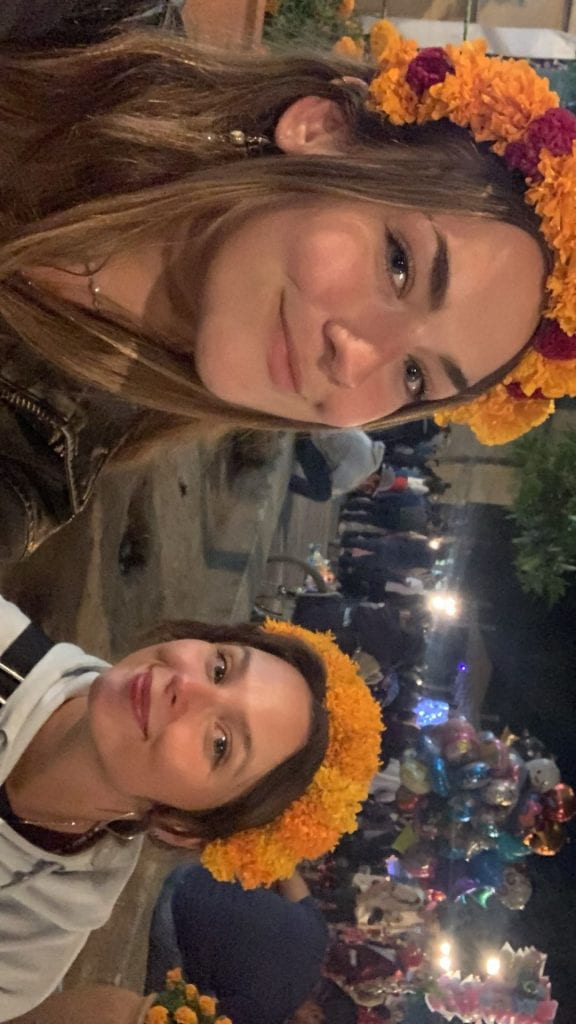
All the streets are covered in ‘calvarias’ (mini skulls) and ‘Catrinas’ (a skeleton women wearing fancy clothes). The prominence of Catrianas across the city is a reminder that under the vanity and fancy clothes of the living, we will all become skeletons one day. She is the face of the holiday and explains why many people paint their faces to look like skeletons and wear fancy clothes.
November 1st and 2nd commemorate different souls, alongside the belief that particular souls visit these different days. November first is the day to celebrate deceased children and welcome them home. Whereas November second is for deceased adults, who tend to be ancestors.
La Ofrenda
La Ofrenda is the altar that families build to honor these deceased loved ones. It is believed that souls visit these ofrendas overnight. In my Psychology presentation, studies found that for many Mexican children, they had a strong belief their loved ones visited, and had personal sightings themselves. The type of items on the ofrenda is dependent on the lost loved one you are commemorating. Ofrendas are not limited to families’ homes but were found across the streets and stores of Oaxaca city. It was an honour to witness everyone’s ofrendas. During my time in Oaxaca, I had the amazing opportunity to make an ofrenda for a lost loved one. As long as you are respectful and appreciative, you are welcome to take part. I had Mexican friends from my university help and advise me on what to add to my one. There are a couple of things needed within the ofrenda. One of them being a photo of your loved one. Another was the soul’s favorite drink, to represent the element of water. For Mexicans, this tended to be for Mezcal and Tequila, which is this traditional hot liquor. A candle is another common item for an ofrenda, to represent the element of fire. The element of earth can be presented through the marigold flower, or their favorite savory. The most common savory to add to an ofrenda is the pan de muerto, which is a sweet Mexican speciality. Families also tend to put what their person loved in order to welcome them back to the world of the living. For my ofrenda, I added a shell bracelet due to him loving the beach, and some other pieces that made me think of him.
EL PANTEÓN (cemetary)
A massive part of this two-day holiday is visiting the graveyards to reunite with the dead. Families tend to stay at the graveyard all day til the night. They normally prepare buffets of food and drink around their loved ones’ graves.
My visit to the cemetery was something I have never experienced before. It almost felt like Chrstimas Day, but hosted at a graveyard. The site looked particularly gorgeous at dusk, in which many families began to light candles around the gravestones. Throughout the night there were people singing, celebrating and playing live music. As soon as you left the cemetary, there was a massive carnival. Filled with rides, street food and carnival games, the entire sector felt like a massive party. It was such a special and beautiful way to honor those that have passed away. I loved how all members could take part in this, even children. Unlike Westernized countries like New Zealand, death was welcomed with open arms rather than scarred from. I loved how Mexicans perceive death, and this experience definitely changed my approach on how I understand death.
Around sunset, my friends and I took my Ofrenda, for my friend Jack, to the graveyard. Out of respect to Mexican families, we found a little spot in the corner of the cemetery to sit down. We shared a Danish custard (my past friend’s favorite dessert) and drank Azulittos (a famous blue cocktail in Mexico) around my ofrenda. I lit my talavera candle and enjoyed the live music that stretched across the cemetery. I not only felt blessed to experience dias de los muertos but to also involve a passed loved one that I dearly miss. In a way, the experience helped with parts of my grief that I have never confronted, and it will be a moment I will never forget.
LA CALENDA (parade)
Dia de los muertos is also known for its multiple parades that occur throughout the city that can begin at any hour of the day. The parades consisted of paper mashay pieces, a mariachi band , fireworks , and locals dressed as catarinas or any form of halloween costume. The best part of the parades was that anyone was welcome to join and dance amongst the music. It did not feel like your usual parade, rather it was a massive mob of Mexicans that stopped at random parts of the city to let the mariachi play and you would dance around them.
Las Calendas were not limited to just the main center, but to little towns within the Oaxacan state. On our first night, we visited the little towns to watch. In one of them, there were children as young as 4 year olds dressed in halloween costumes taking part in dance competitions. Whereas in another town, there were parades that consisted of the mirror men, which were people that dressed head to toe in mirrors. What made it impressive is that these parades started at dusk, and only ended at sunrise the next day. I had never seen such a variety of costumes before, and I loved how much energy had been put into the celebration.
LA COMIDA (food)
The state of Oaxaca is famous for its delicious cuisine, one that many tourists want to try during their visit to Mexico. In accordance with the holiday, Pan de Muerto is a very popular dessert during this time of year. Translated to Bread of the Dead in English, it is a sweet bread that has little people’s faces painted in the middle. The bread is supposed to represent a cemetery, in which the little people signify those who are buried. Mexicans recommend you have Pan de Muerto with chocolate caliente (hot chocolate). Oaxacan chocolate is another popular sweet in Mexico, so these hot chocolates taste very different compared to your usual.
In terms of savory, Oaxaca is famous for Tlyauda, which are found in expensive restaurants or at street food stalls. It is prepared by having a large thin tortilla disc smeared with refried beans, then it is topped with Oaxacan cheese (another iconic speciality), lettuce and slices of avocado. It is topped with different types of roasted meat, depending on the choice of the customer. The options of roast meat include Chorizo (spicy sausage) , Tasajo (dried beef) or Cecina (chili powdered pork). It can be served folded in half (like a quesadilla) or open-faced (like a pizza). I personally prefer the Chorizo, and it was very delicious.
From the tasty food to the tears shed at the cemetery, to the insane fireworks at the parade; day of the dead truly brought it all. I feel that it is an experience that everyone should participate in at some point of their lives. It brings a different perspective to life and death, in which finds beauty within grief.
